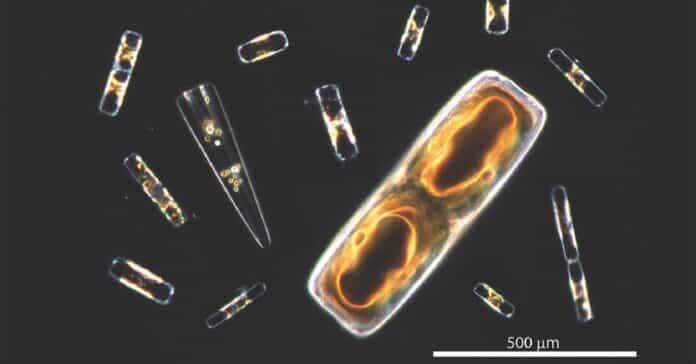Phytoplankton, the microscopic plants of the ocean, have long fascinated scientists with their critical role in oxygen production. In a groundbreaking discovery, researchers have recently uncovered the intricate cellular process behind their phenomenal ability to generate oxygen.
This revelation promises to deepen our understanding of the Earth’s oxygen cycle. It sheds light on the vital role of phytoplankton in maintaining a balanced and habitable planet. Let’s delve into the remarkable world of phytoplankton and explore the fascinating mechanisms that power their oxygen production.
In a groundbreaking discovery, scientists at the University of California (UC) San Diego’s Scripps Institution of Oceanography have identified a newly uncovered cellular mechanism that plays a crucial role in the photosynthesis of marine phytoplankton.
This remarkable process, described as “groundbreaking,” accounts for a substantial portion of oxygen production and carbon fixation in the ocean, ranging from 7% to 25%. When considering the combined effect of land-based photosynthesis, this mechanism is estimated to contribute up to 12% of the total oxygen on our planet.
Phytoplankton, microscopic organisms that inhabit aquatic environments, have long been recognized for their vital role in the Earth’s oxygen cycle. These tiny algae serve as the foundation of the marine food web. They are responsible for approximately 50% of the oxygen generated worldwide.
The new study, published May 31 in the journal Current Biology, identifies how a proton-pumping enzyme (VHA) aids global oxygen production and carbon fixation from phytoplankton.
Lead author Daniel Yee, who conducted the research while a Ph.D. student at Scripps Oceanography and currently serves as a joint postdoctoral researcher at the European Molecular Biology Laboratory and University of Grenoble Alpes in France, said, “This study represents a breakthrough in our understanding of marine phytoplankton, Over millions of years of evolution, these small cells in the ocean carry out minute chemical reactions, in particular, to produce this mechanism that enhances photosynthesis, that shaped the trajectory of life on this planet.”
Researchers from the Scripps Institution of Oceanography and the Lawrence Livermore National Laboratory, led by Daniel Yee, have investigated the role of the VHA enzyme, known as the “proton pump,” in diatoms, a type of phytoplankton with silica cell walls.
Through advanced microscopy and genetic tools, they discovered that the VHA enzyme enhances photosynthesis in diatoms by delivering more carbon dioxide to chloroplasts, producing complex carbon molecules, and increasing oxygen release.
This study not only unveils the diverse functions of the VHA enzyme in different organisms but also provides valuable insights into the significance of photosynthesis mechanisms in diatoms, contributing to our understanding of marine ecosystems and the global carbon cycle.
The researchers were able to establish a connection between the newly discovered mechanism in diatoms and various aspects of evolution. Diatoms originated from a symbiotic event between a protozoan and algae, resulting in the fusion of the two organisms into one.
This fusion, known as symbiogenesis, was facilitated by phagocytosis, where one cell consumes another. In the case of diatoms, the proton pump enzyme of the predator cell ended up promoting photosynthesis by the ingested prey instead of fully digesting it.
This unique mechanism gave diatoms an advantage in photosynthesis and may have played a role in the increase of oxygen in the atmosphere when diatoms originated 250 million years ago.
The researchers believe their findings can inspire biotechnological approaches to improve photosynthesis, carbon sequestration, and biodiesel production. Moreover, it contributes to a better understanding of global biogeochemical cycles, ecological interactions, and the impacts of climate change.
In conclusion, marine phytoplankton’s newly discovered cellular mechanism represents a significant breakthrough. It not only deepens our understanding of oxygen and carbon production but also holds promise for enhancing their productivity in the future.
Journal Reference:
- Daniel P. Yee,Ty J. Samo,Raffaela M. Abbriano, et al. The V-type ATPase enhances photosynthesis in marine phytoplankton and further links phagocytosis to symbiogenesis. Current Biology. DOI: 10.1016/j.cub.2023.05.020
